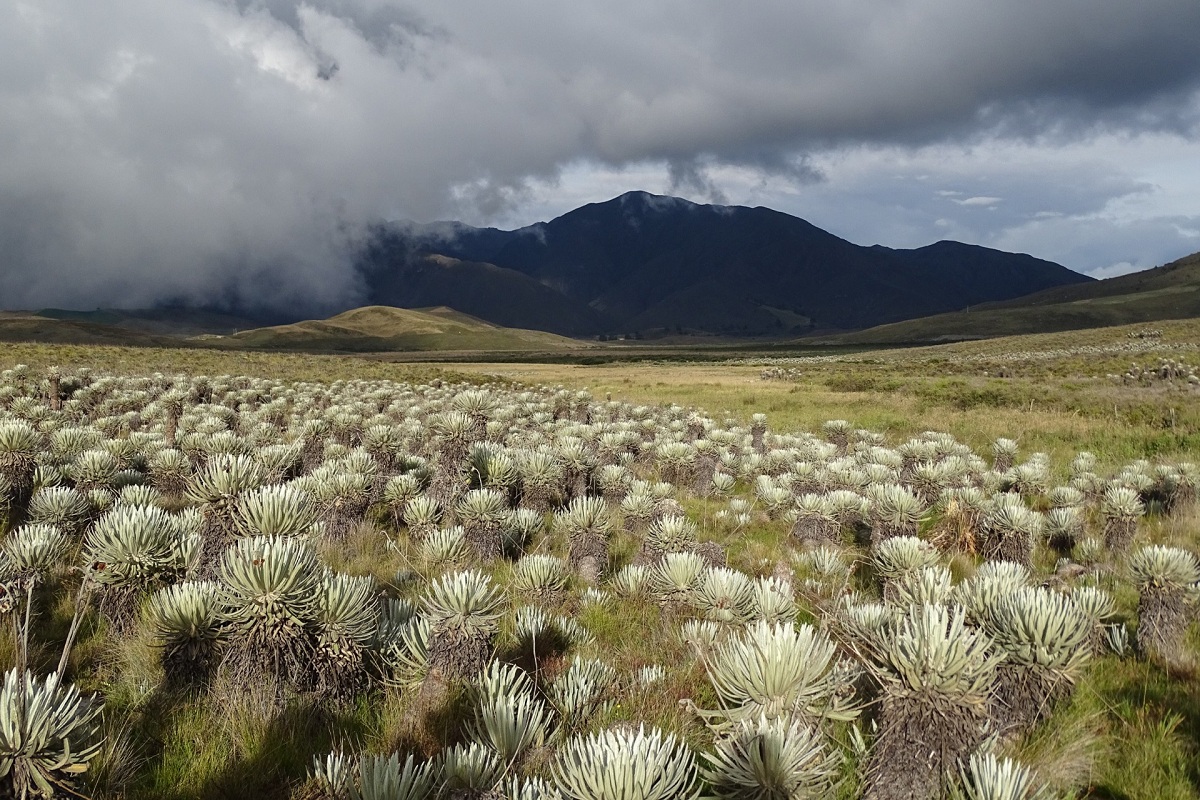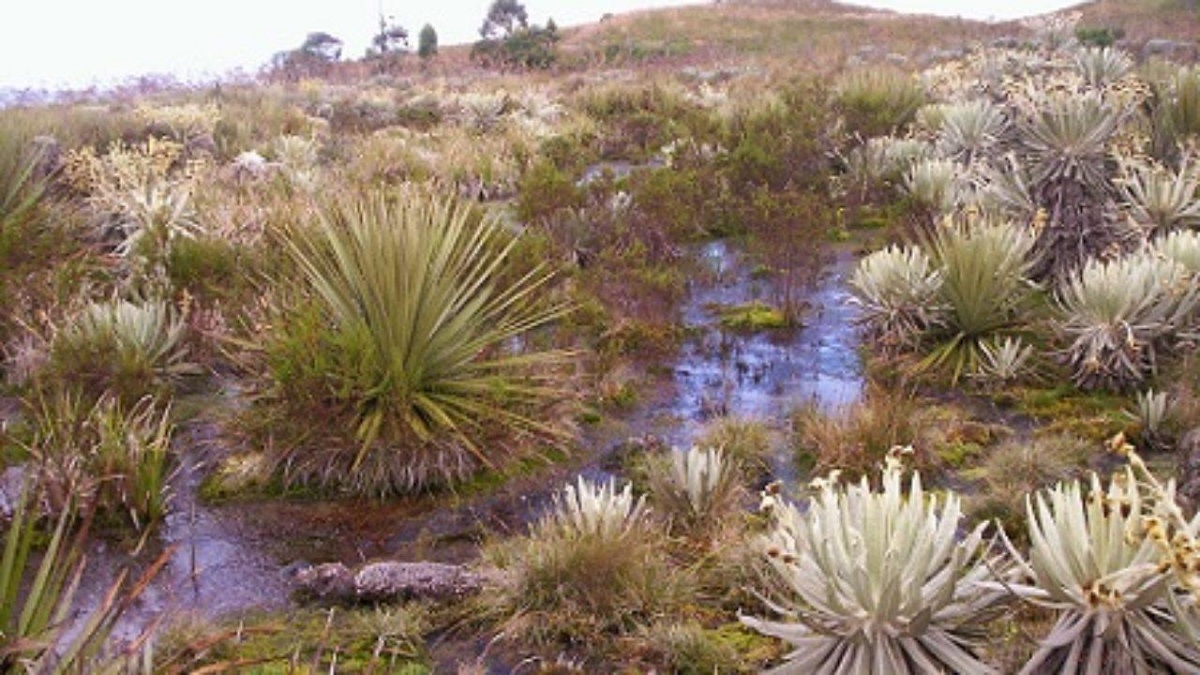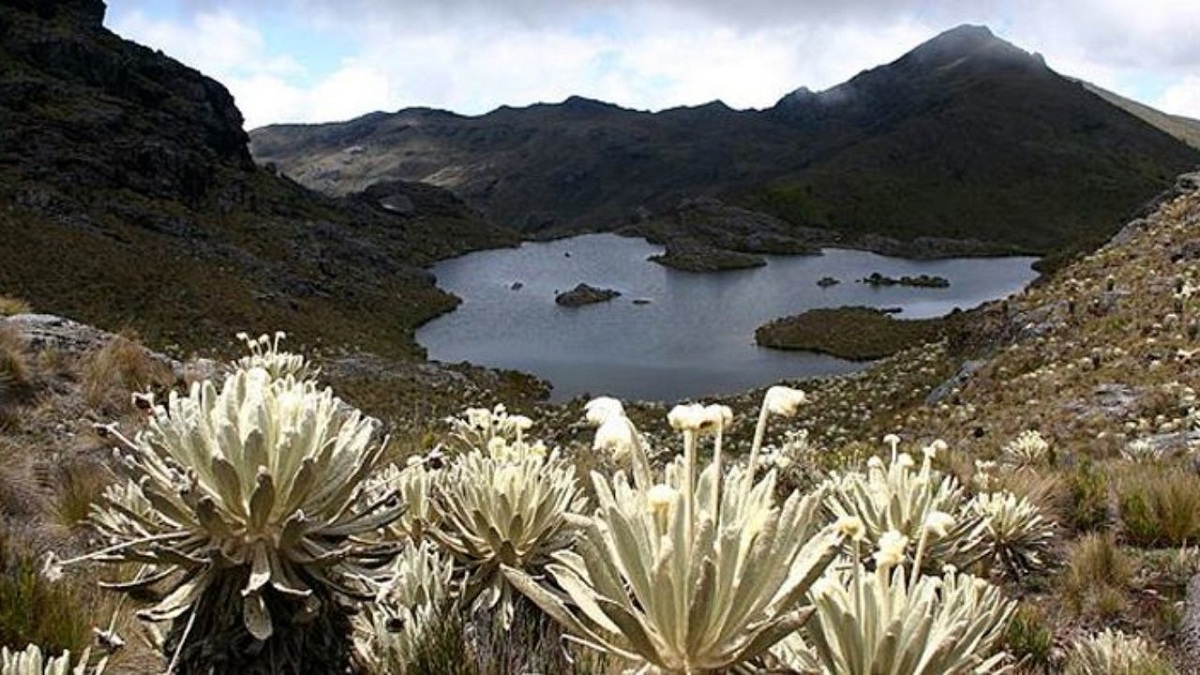
Among the different types of mountain ecosystems that exist there is a very special one that is known by the name of paramo. It can be found in some areas of South America and has some special characteristics that make it a very beneficial ecosystem. They are very large mountainous areas that have a large amount of vegetation and fauna. For this reason, it has become one of the target ecosystems for the protection of natural resources.
In this article we are going to tell you all the characteristics and importance of the moor.
Key features

It is a type of ecosystem that is found in mountainous areas quite widely. These areas are full of abundant flora and fauna. They are usually a natural environment that It allows a management of the environment and of some resources such as water, which is quite beneficial. All the people who live in places near the páramo can come to benefit in their region. For example, if the area where people live is near a wasteland it can benefit from times of drought. This is because the moor is capable of storing large amounts of water.
All these characteristics make the páramo a target ecosystem for conservation and protection. Among the main characteristics that we have of the páramo we can highlight the specificity of the ecosystem. It is a unique ecosystem on the planet due to the environmental conditions that generate it. Generally, it can be described as an intertropical mountainous ecosystem.
It keeps a very important function such as water retention and maintaining the balance between contributions and losses within the ecosystem. As we know, water is one of the main variables to take into account for the formation of life. Therefore, the páramo becomes a fundamental ecosystem for the creation of life. The characteristic of Water conservation is due to its altitude and climate. Thanks to these environmental conditions, water can be safeguarded in times of drought. This is done by taking the water to lower areas in order to supply them. In this way, the supply of drinking water for humans in nearby towns is guaranteed. It can also be used for irrigation and hydroelectric power generation.
Origin and importance of the moor

The best known moorland in the world is the Andean. It is found in South America and extends from Colombia to northern Peru. It is known that 80% of all the wastelands in the world are found in the countries of Venezuela, Ecuador, Peru, Costa Rica and Colombia, and only here are more than 60% of the existing wastelands.
Another characteristic of the páramo is that, for its formation, locations with altitudes of approximately 2.700 meters above sea level are needed. The maximum altitude range It has been found at 4.000-5.000 meters above sea level. According to the biogeographic characteristics and the functions that this ecosystem fulfills, the vegetation is divided into several types. We find vegetation of the low moor, middle moor and super moor. These vegetation scales depend entirely on latitude. As we know, plants need an altitude and environmental conditions to be able to develop correctly.
The geology of the moor has an irregular relief. The origin of the soils is volcanic and, therefore, they have a dark color. In addition, it has a rugged and rugged relief. Nevertheless, it is capable of harboring a large amount of vegetation and fauna. This is due to the large amount of organic matter that has been trapped and that can serve as nutrients.
Regarding the hydrogeology of the paramo we find large U-shaped valleys caused by glacial relief. The glacial relief is formed through the transit of ice that gives depth as the terrain changes. Its large slopes make the descent of the waters easier. This is one of the reasons why we also find V-shaped valleys. The waters erode the ground faster.
Biological wealth of the páramo

As we have already mentioned before, the páramo is a type of ecosystem that has great biological wealth. And it is that almost all species have been able to adapt to survive in the extreme conditions present here. One of these conditions is the intense daily fluctuation that exists with temperatures. There is also a marked seasonality of rainfall and high radiation meters. We must bear in mind that the temperature range is one of the most important variables for the development of life. Like deserts, in these ecosystems this gradient is quite wide.
The seasonality of rainfall makes the vegetation develop that is capable of resisting long periods of drought. There are moments of great amount of radiation and others with a lot of cloudiness with desiccant winds and daily freezing and thawing of the soil. These temperature fluctuations generate these sudden changes. Therefore, as there is little oxygen availability due to the altitude and poorly developed soils, there is a deficiency of nutrients. All living beings here have had to adapt to these conditions.
Some of the existing adaptations of flora and fauna are mechanisms for water retention and protection against the wind. Another of the most abundant adaptations is to maintain the optimal and stable temperature and to avoid the loss of energy.
Flora and fauna
Finally, we are going to analyze the flora and fauna of the páramo. The vegetation it is able to prevent flooding due to its density. It also reduces the erosive impact of the soil. Among the flora that we find and that have been able to adapt to these conditions are the following:
- Frailejon.
- Cardon.
- Bamboos.
- Dwarf trees and shrubs.
On the other hand, the fauna is highly vulnerable not only due to the conditions but also due to human threats of habitat destruction and uncontrolled hunting. Among the animals that inhabit the páramo we find the following:
- Mammals such as the puma, tigrillo, foxes, jaguar and the spectacled bear.
- Reptiles in which we find lizards and snakes
- Amphibians in which we have species of salamanders and frogs and toads.
- 154 species of birds such as the condor, the blackbird, hummingbirds and some ducks.
- 131 species of butterflies.
I hope that with this information you can learn more about the páramo and its importance.